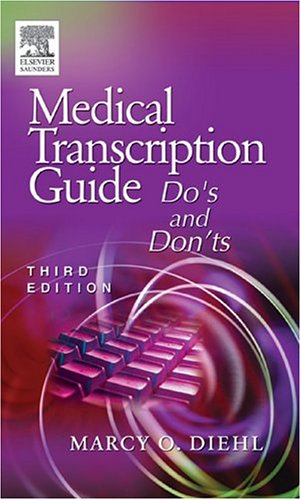All Categories



Medical Transcription Guide: Do's and Don'ts
Share Tweet
Get it between 2024-05-07 to 2024-05-14. Additional 3 business days for provincial shipping.
*Price and Stocks may change without prior notice
*Packaging of actual item may differ from photo shown
- Electrical items MAY be 110 volts.
- 7 Day Return Policy
- All products are genuine and original
- Cash On Delivery/Cash Upon Pickup Available








About Medical Transcription Guide: Do's And Don'ts
A quick reference for the medical transcriptionist, this book provides basic rules of grammar as well as current trends in the field. It’s especially useful in searching for help with an obscure rule or in reinforcing a common practice. Using short chapters, this text provides the Do’s ― the grammatical rule, its exceptions, and its variations, along with examples; and the Don’ts ― any common contradictions of that rule. Examples are taken from medical writing rather than general writing. Easy-to-use format provides numbered topics in each chapter, which are followed by Do's and Don'ts in quick, easy sentences. Spiral binding allows book to lay flat so MT's can refer to a rule without taking their hands off the keyboard. Clear examples are given to clarify difficult-to-understand concepts and rules. HIPAA Guidelines chapter provides general information about HIPAA legislation, with rules explaining its impact on topics such as e-mail, faxing, patient records, and privacy/security. Content has been updated to reflect changes in technology (such as use of the Internet), slang terms, and new medical terms that affect the rules of medical transcription. A table lists dangerous abbreviations to avoid, all banned by JCAHO. Homonyms and Sound-alike Words in the appendix focus on the many homonyms in medical language that can confuse a medical transcriptionist and cause a document to be transcribed incorrectly, leading to incorrect treatment of the patient. Appendices are lettered and thumb-tabbed for ease of use, to differentiate from the body of the text. Content reflects the AAMT style, the standard among major employers of medical transcriptionists.

















